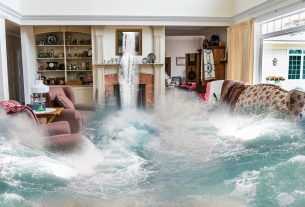In this new series, we hope to promote knowledge exchange in restoration and invite restoration practitioners to share their stories: successes, failures, implementation of learnings from other places and anything in between! To kick off the series, Sydney Henderson and Dr Pip Gullett share their story from Cairngorms Connect.
Cairngorms Connect is a partnership of neighbouring land managers, committed to a bold and ambitious 200-year vision to enhance habitats, species and ecological processes across a vast area within the Cairngorms National Park.
The Cairngorms Connect area stretches over 600 square kilometres and is the largest ecological restoration project in the UK. It is a landscape of superlatives: Ancient woodlands intersected by sparkling rivers and lochs, encircle an Arctic-like mountain massif – the most extensive and wildest of its kind in Britain; there are vast tracts of blanket bog, tranquil wetlands and secret woodland bogs. It is a place where eagles soar and red squirrels forage; home to plants, insects, birds and mammals found in few other places.

Nature doesn’t recognise fences, or lines drawn on a map – eagles soar over hills, and wood ants hurry through forests. To them, the important boundaries are where opportunities improve or diminish, where survival gets easier, or more difficult. The Cairngorms Connect Partners work together, creating a seamless landscape for nature, resilient to the effects of climate change.
The Partners involved are Wildland Limited, Forestry and Land Scotland, NatureScot, RSPB Scotland, with the Cairngorms National Park Authority as a supporting partner. These organisations are working together to control deer numbers to allow forests to expand; to naturalise rivers; to restore huge tracts of peatland; and weave value and pride in this work into the social fabric of local communities, for a truly sustainable 200-year vision.

The strength of Cairngorms Connect is the coming together of like-minded managers committed to delivering habitat enhancement at a scale unparalleled in Britain.
Since 2014 the Partners have been working together on a landscape-scale approach to ecological restoration. In 2018, the Partnership was catalysed by the awarding of funding from the Endangered Landscapes and Seascapes Programme (ELSP), which is funded by Arcadia (a charitable fund of Lisbet Rausing and Peter Baldwin) and managed by the Cambridge Conservation Initiative.
This funding not only facilitated the delivery of ecological restoration, but also an extensive programme of Science and Monitoring: The Partnership Area is a landscape full of potential for bold and ambitious ecological restoration, but it’s also a great place to do the science of ecological restoration.
The size of the area, and the huge depth of ecological and practical knowledge among the Cairngorms Connect Partners and collaborators, is a great basis for an applied science programme, to help us overcome barriers in novel large-scale restoration. This can help us answer questions like “How can we best restore landscapes?” and “If we restore landscapes, what do we gain?”
With funding from ELSP, the Partnership’s Science and Monitoring Programme aims to:
1. Provide an evidence base, supporting management approaches in the Cairngorms Connect area.
2. Monitor the effects of the restoration process, including:
- Ecological responses: measuring changes in plant and animal communities
- Ecosystem services: measuring changes in things of value to society, like flood risk or climate regulation
- Societal benefits: measuring changes in local attitudes, wellbeing or economic opportunities, associated with ecological restoration
3. Test interventions via large-scale field experiments, helping us to understand how we can undertake restoration most effectively.

Being part of the ELSP family of restoration projects allows us at Cairngorms Connect to engage with other restoration experts working elsewhere across Europe, from the forests of Romania to the peatlands of Ukraine, the floodplains of the Danube to Turkey’s Mediterranean sea. What all of these ELSP-funded projects have in common, is a vision in which resilient ecosystems are able to function naturally, where wild animals and plants flourish alongside people, and where science and monitoring form a corner post of restoration.
These projects are undertaking restoration at spatial and temporal scales rarely (if ever) seen before in Europe, so for some of the restoration actions we’re trying to achieve there is limited existing evidence of how best to do things or of the precise and wide-reaching benefits restoration can provide.
By undertaking detailed, rigorous and robust monitoring of a diverse range of indicators, alongside experimental trials to compare alternative management techniques, Cairngorms Connect is helping to build the evidence base to support ecological restoration efforts both here and further afield, in the restoration community more generally. Connecting with scientists and monitoring staff from other ELSP projects has enabled us to tap into and contribute to a wider network of knowledge and experience, helping us to solve common problems and opening our minds to alternative solutions.
Together, as a family of restoration projects firmly rooted in science and monitoring, we are contributing to the evidence needed to inform national and global policies to address some of the most urgent challenges that society faces today.
For more information: https://cairngormsconnect.org.uk/
Discover more posts from our ‘Restoring Landscapes’ blog series here. If you have an idea for a blog that would fit into this series, please contact Catherine Waite.


